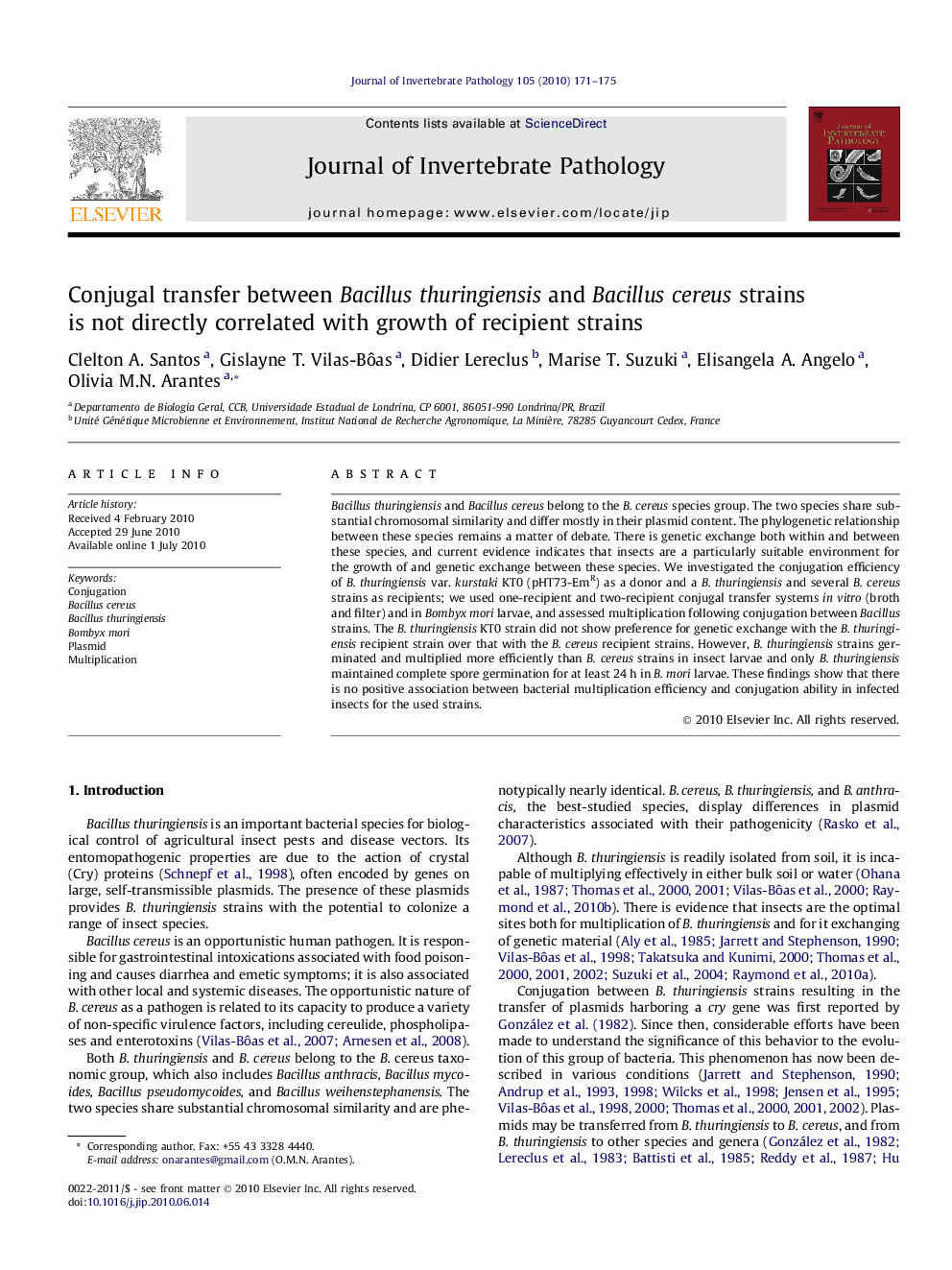| کد مقاله | کد نشریه | سال انتشار | مقاله انگلیسی | نسخه تمام متن |
|---|---|---|---|---|
| 4558134 | 1329923 | 2010 | 5 صفحه PDF | دانلود رایگان |

Bacillus thuringiensis and Bacillus cereus belong to the B. cereus species group. The two species share substantial chromosomal similarity and differ mostly in their plasmid content. The phylogenetic relationship between these species remains a matter of debate. There is genetic exchange both within and between these species, and current evidence indicates that insects are a particularly suitable environment for the growth of and genetic exchange between these species. We investigated the conjugation efficiency of B. thuringiensis var. kurstaki KT0 (pHT73-EmR) as a donor and a B. thuringiensis and several B. cereus strains as recipients; we used one-recipient and two-recipient conjugal transfer systems in vitro (broth and filter) and in Bombyx mori larvae, and assessed multiplication following conjugation between Bacillus strains. The B. thuringiensis KT0 strain did not show preference for genetic exchange with the B. thuringiensis recipient strain over that with the B. cereus recipient strains. However, B. thuringiensis strains germinated and multiplied more efficiently than B. cereus strains in insect larvae and only B. thuringiensis maintained complete spore germination for at least 24 h in B. mori larvae. These findings show that there is no positive association between bacterial multiplication efficiency and conjugation ability in infected insects for the used strains.
Journal: Journal of Invertebrate Pathology - Volume 105, Issue 2, October 2010, Pages 171–175